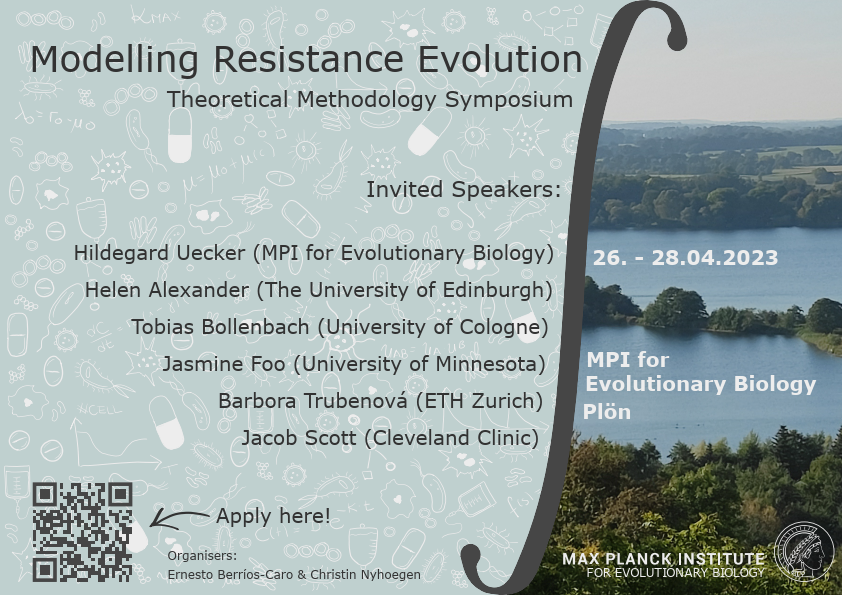Bacterial populations can consist of several isogenic subpopulations known as phenotypes. Individuals in a bacterial population can switch from one phenotype to another in order to adapt to changing environments. Phenotypic switching can thus confer survival benefits to a bacterial population and may be a mechanism for the development of antibiotic resistance. Kussell and Leibler in...
Evolution of drug resistance is contingent on sufficient mutational supply as well as successful establishment of the initially rare resistant cells that are subject to stochastic extinction. Importantly, the potential for resistance evolution strongly depends on the drug concentration that not only directly affects the strength of selection, but also impacts the required mutational targets,...
Background: Fosfomycin is an old “forgotten” antibiotic that is effective against both multi-drug resistant Gram-positive and Gram-negative bacteria. In order to prevent the emergence and spread of resistances, fosfomycin is often used in combination with other antibiotics, e.g. amikacin. However, the design of effective combination therapies requires a comprehensive understanding of the...
In immune-oncology, the lifecycle, engagement, and cytotoxicity of natural or engineered T cells are important dynamical processes that need to be quantified to better understand cancer resistance and susceptibility to immunotherapy. We investigate the process of naïve and memory T cells engaging antigen-presenting cells to be activated to proliferate and differentiate to effector cells. In...
In vitro experiments are an important tool in cancer research to understand the growth of cancer cells and their response to chemotherapeutic treatment. Mathematical models facilitate the analysis of the obtained experimental data and can increase our understanding of cancer cell dynamics.
Using confluence time series capturing the in vitro growth of pancreatic cancer cell lines treated with...
Evolutionary Graph Theory (EGT) aims to understand the interplay of natural selection and genetic drift in spatial structures. A spatial structure is modelled as a graph with nodes representing asexually reproducing individuals, and edges dictate the interaction among these individuals. Based on the fixation probabilities of mutants on graphs, graphs are mainly categorised as amplifiers of...
Weeds are a major threat to crop production, causing the highest potential yield losses.Already since the late 1960s conventional agriculture has primarily relied on the application of herbicides for controlling weeds.However, the number of available herbicides is limited and they often share the same mode of action. The overuse of those active ingredients has led to the widespread evolution...
The antibiotic response of bacterial pathogens can be altered by interactions with other species of bacteria which have been suggested as a cause for treatment failure and resistance development in polymicrobial infections. This study aims to investigate the influence of interspecies interactions on the pharmacodynamics of antibiotics which may guide design of treatment strategies. We...
Treating Escherichia coli with the antibiotic cefotaxime at sub-MIC concentrations leads to complex responses: (i) filamentation of cells, which is known to be related to delayed lysis and enhanced antibiotic tolerance, (ii) higher biomass growth rates at intermediate antibiotic concentrations, and (iii) increased stochastic variation of the growth rate with growing antibiotic concentrations....

